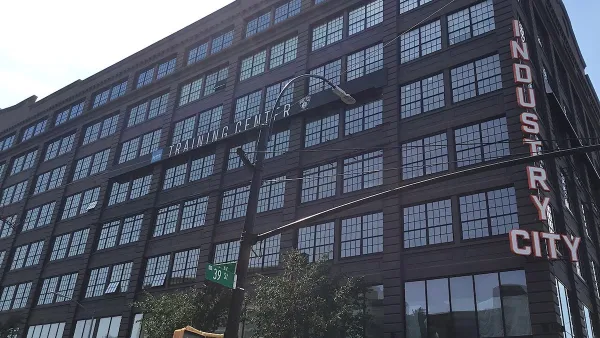The neighborhood of Chelsea in Manhattan, location of the High Line and one of the hottest real estate markets in the city, provides a case study of the wealth gap, with each side living in close proximity.
"Census and city figures show that the average household income in Chelsea, about $140,000, is almost five times the average for households in public housing in the area," according to Mireya Navarro. "The neighborhood now ranks among those in the city with the greatest income inequality, according to the Furman Center for Real Estate and Urban Policy at New York University, as the share of households in the highest income brackets — over $250,000 — has grown."
The article notes the ongoing tension behind two housing initiatives moving forward under the direction of Mayor Bill de Blasio: the upzoning of East New York and a proposal to build new housing on properties controlled by the New York City Housing Authority. Both of those proposals have sparked concerns among residents that they will be displaced by rising costs connected with new developments. Navarri cites Chelsea's example for some perspective on the current controversy affecting those parts of the city.
"In long-gentrified Chelsea, the worst fears have yet to come true. The housing projects — Fulton Houses (between 16th and 19th Streets and Ninth and 10th Avenues) and the neighboring Elliot and Chelsea Houses (in the mid-20s) — with about 2,000 apartments combined, are still there, as they have been since the 1940s (Elliot) and ’60s (Fulton and Chelsea). The brick buildings have deteriorated, however, under the weight of time and as the Housing Authority’s maintenance budget has fallen short, although city officials say they remain committed to preserving public housing."
The article goes onto describe how the dichotomy of income levels impacts the people on the low end of the spectrum—citing some examples of how policy neglects the block-by-block discrepancies of neighborhoods like Chelsea when data is only considered at the ZIP Code level.
FULL STORY: In Chelsea, a Great Wealth Divide

National Parks Layoffs Will Cause Communities to Lose Billions
Thousands of essential park workers were laid off this week, just before the busy spring break season.

Retro-silient?: America’s First “Eco-burb,” The Woodlands Turns 50
A master-planned community north of Houston offers lessons on green infrastructure and resilient design, but falls short of its founder’s lofty affordability and walkability goals.

Delivering for America Plan Will Downgrade Mail Service in at Least 49.5 Percent of Zip Codes
Republican and Democrat lawmakers criticize the plan for its disproportionate negative impact on rural communities.

Test News Post 1
This is a summary

Test News Headline 46
Test for the image on the front page.

Balancing Bombs and Butterflies: How the National Guard Protects a Rare Species
The National Guard at Fort Indiantown Gap uses GIS technology and land management strategies to balance military training with conservation efforts, ensuring the survival of the rare eastern regal fritillary butterfly.
Urban Design for Planners 1: Software Tools
This six-course series explores essential urban design concepts using open source software and equips planners with the tools they need to participate fully in the urban design process.
Planning for Universal Design
Learn the tools for implementing Universal Design in planning regulations.
EMC Planning Group, Inc.
Planetizen
Planetizen
Mpact (formerly Rail~Volution)
Great Falls Development Authority, Inc.
HUDs Office of Policy Development and Research
NYU Wagner Graduate School of Public Service




























